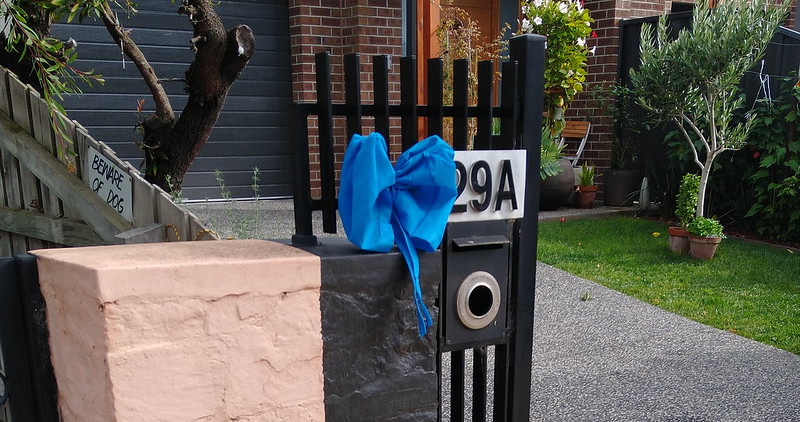Last week’s horrific Eastern Freeway crash, which killed four police officers, shocked all of us – even before we knew about the alleged execrable deeds of the Porsche driver.
In tribute, flags have been flown at half-mast, and around Melbourne, many people placed blue ribbons on their front gates and fences.
And a number of city buildings lit up blue to remember the fallen officers.
Of course for this to happen, appropriate lighting equipment needs to be available.
One of the most prominent buildings involved was Flinders Street Station.
In 2018 a new external lighting system was commissioned as part of the $100 million refurbishment of the station, replacing older floodlights.
The lighting system of 1100 lights can illumine the station in any possible colour and will allow for the running of light shows for major events.
…Created by Melbourne company APEC Electrical and their supplier Darkon, the lights are connected via 20 kilometres of cabling, allowing the system to operate automatically and by remote control. In a first for an Australian heritage building, each of the 1100 lights is networked through its own internal microprocessor.
Each light has a custom made amber LED that replicates the colour of the original flood lights, while only using a third of the energy of the old system.
Rail Express – New LED system lights up Flinders Street Station
The lighting supplier Darkon also has information about the project on their web site, and they’ve got a demonstration video showing off the capabilities of the lighting system, which includes animated colours as well as static. Clever stuff.
Related to the upgrade of exterior lighting – which is lovely to look at, but doesn’t really directly help passengers – were upgrades to the lighting inside the station, including on the platforms.
This had to take into account the risks of too much light in the wrong places:
A number of luminaires were identified as possible candidates, with each included in a detailed 3D model to help ensure glare, reflectance and shadowing wouldn’t interfere with CCTV equipment or disrupt train driver’s vision of their surroundings, including signalling.
…After a brief trial and feedback from a range of stakeholders, the decision was made to roll the Cree CPY Series out across the entire project. In order to maintain Flinders Street Station’s heritage appeal, it was decided a correlated colour temperature (CCT) of 3500K would best suit the project; warm enough to match the station’s architecture, without affecting safety and visibility along the platforms.
Advanced Lighting Technologies – Flinders Street Station
It’s not immediately clear how much money was spent on all this new lighting as part of the broader project. But it seems to have been a worthwhile upgrade, and during a major refurbishment was the right time to do it.
While the external colours of the station don’t make the trains run on time, this capability does help cement the station’s place in our city’s culture.
And it ensures that what is perhaps Melbourne’s most prominent city building can help us celebrate in the good times – or as at present, help mourn the tragic loss of four police officers who were doing their jobs, helping to protect all of us.
- You can donate in support of the families of the four officers via the Victoria Police Legacy Remembrance Fund
- Lead photo is from 2018, by HiVis pictures via Concrete Playground


2 replies on “Bathed in blue”
Thanks for your post – I did not realise the blue lights were part of a (very flexible) lighting upgrade.
Terrible to lose a police officer on duty – to lose four is absolutely tragic. Awful bad luck that an out of control truck veered into the emergency lane. Given that the police were undertaking fairly routine traffic duties, I can’t help wonder why there hasn’t been any RACV road assist staff killed attending to stranded cars in emergency lanes.
The answer to Roger’s question – why this is so rare – is that everyone who stops on the side of a freeway to do work has to use proper traffic control to slow the traffic and keep it away from the work site. RACV vans don’t stop on freeways; instead, VicRoads (now DoT) sends a tow truck to move the car off the freeway and out at the nearest exit, and then RACV can attend.
People mowing the grass, cleaning up rubbish, repairing the road, installing a barrier, setting up a traffic counter or doing anything at all have to submit a traffic management plan to DoT and have it approved, and they need to ensure their traffic controllers do a proper job to keep everyone safe. There are prison terms available when you break these rules and someone gets hurt. So doing roadside work when traffic is operating in the next lane without a works zone speed limit and appropriate physical separation, and without a crash attenuator truck positioned before the site, is simply not allowed.
These rules apply to everyone except police.